How CISOs Support Compliance
In today’s highly regulated business environment, the role of Chief Information Security Officers (CISOs) is increasingly critical in supporting compliance efforts and navigating the complex regulatory landscape. CISOs help organizations achieve compliance not only by understanding pertinent regulations and building a strong foundation, but also by meticulously assessing risks, fostering a culture of cybersecurity awareness, and effectively communicating with stakeholders across the organization.
Let’s delve deeper into the various ways in which CISOs support compliance, from staying informed about ever-changing regulations to ensuring effective communication between IT leaders and business stakeholders. By balancing cost, value, and risk, CISOs promote efficient financial management practices that ultimately lead to improved customer trust and market expansion, all while remaining compliant with the evolving regulatory demands of the financial industry.
CISOs support compliance efforts in the financial services industry by implementing strategies and initiatives that address regulatory requirements and mitigate risks.
Understanding Pertinent Regulations
Ensuring awareness of specific requirements that the organization must adhere to is crucial from both business and IT security perspectives. CISOs must familiarize themselves with the specific requirements and regulations their organization is required to comply with and lay a solid foundation to address the evolving compliance landscape effectively. This foundation will likely include feedback loops between impacted stakeholders and policy creators.
Assessing Risk
CISOs should identify the most important and vulnerable business processes, assign risk ratings to them, and determine the organization’s risks and vulnerabilities. Effective communication throughout the firm is crucial for this step.
To assess risk, CISOs first need to identify whether they are dealing with large-scale assessments (e.g., nuclear or oil and gas industry), required specific assessments (e.g., handling hazardous substances or manual handling operations), or general assessments for managing general workplace risks. Then, they examine how, where, how much, and how long individuals are exposed to potential hazards to evaluate the risk associated with each hazard appropriately. Using a risk matrix helps CISOs assign a risk rating to each hazard by considering factors such as the likelihood of occurrence and the severity of potential injuries. This provides a systematic way to prioritize and manage identified risks.
CISOs also work to analyze the potential risks and their impacts on the business environment to understand how these risks may affect the organization as a whole. Depending on the industry and the type of risks being assessed, they will likely use automated tools or software to assist in the risk assessment process.
Increasing Internal Awareness about Cybersecurity
To address the global shortage of cybersecurity talent, CISOs upskill the workforce by providing cybersecurity awareness training and regular updates on the latest risks and attack techniques for all employees. Implementing an awareness training program and delivering ongoing updates on the latest risks and attack techniques, is part of their role in building a more robust and knowledgeable workforce.
Communicating Effectively with Stakeholders
High-level communication between CIOs, CISOs, and business stakeholders is essential, but it also needs to be effective. Part of a CISO’s role in supporting compliance is translating regulatory requirements into policies and practices that make sense to and for their organization. This means using a common language when discussing cybersecurity with business stakeholders, focusing on risk and protection, threat detection, response, and recovery instead of low-level controls. By translating these measures, it helps ensure everyone understands the critical aspects of compliance.
CISOs need to understand the organization’s risk tolerance and report any budget cuts or changes that could materially impact it to the board. This helps ensure that the organization maintains an acceptable level of cybersecurity risk and stays compliant with regulatory requirements.
By balancing cost, value, and risk, CISOs can evolve their financial management practices to meet compliance demands and create better returns on investment in cybersecurity. It supports the organization in maintaining compliance while also improving customer trust and expanding to new markets. It also helps better prepare their organizations to meet the increasing regulatory demands and manage the risks they face in the financial industry.
How CISOs Boost Efficiency in Compliance Efforts
CISOs improve efficiency for security and risk management teams by implementing the following strategies:
Staying Up to Date on the Threat Environment
CISOs employ a multifaceted approach to stay up to date on cybersecurity. This includes continuous learning through participation in conferences, webinars, workshops, and training programs, which allows them to stay informed about the latest advancements, best practices, and trends in the field. In addition to these educational opportunities, they regularly read industry-related publications, blogs, and research reports to stay abreast of emerging threats, vulnerabilities, and innovative solutions. Plus, they engage with professional networks and online forums to exchange ideas, insights, and experiences with their peers.
By utilizing threat intelligence platforms and monitoring relevant regulatory changes, CISOs ensure that their organizations remain well-equipped to handle the ever-evolving cybersecurity landscape. Finally, they collaborate with internal and external partners, such as managed security service providers and industry working groups, to share knowledge and implement best practices throughout their organizations.
Optimizing Technology
CISOs can evaluate existing security products and identify overlaps or redundancies to realize cost savings and maintain effective security measures. By adopting a best-of-suite approach, CISOs help to reduce operational complexity and maintain compliance without sacrificing functionality.
Implementing automation
Automation helps organizations scale their security efforts, improve response plans, and maintain compliance more efficiently. By automating repetitive tasks and using machine learning, CISOs can optimize their security processes while staying compliant with regulations. This also allows security teams to focus on higher-priority issues while helping the company scale its security efforts more efficiently.
Machine learning can also aid in the development of response plans for various threats. So to address the cybersecurity skills gap and minimize human error, CISOs are finding new ways to adopt automation and utilize AI technologies. These technologies can help streamline network and security management and improve compliance with regulations.
Developing a Flexible Workforce
Having a nimble, cross-trained cybersecurity team with diverse talents and experience helps organizations adapt to changing compliance requirements. By reprioritizing and refocusing employee assignments, CISOs can ensure that their teams can effectively support compliance efforts even in the face of budget cuts or other challenges.
Enlisting the Right Managed Services Providers
Third-party managed services can provide efficient risk management at scale, helping organizations maintain compliance with regulatory requirements. These providers have expertise in cybersecurity and can implement effective defense plans while controlling costs. By enlisting the right third-party managed services at the right time, they get efficient risk management at scale and at a more cost-effective rate than relying on internal employees who may require extensive training.
Related article: Discover the Top Priorities for CISOs in 2023.
By implementing these strategies, CISOs better prepare their teams to face the increasing risks and requirements in the ever-evolving cybersecurity landscape. Additionally, CISOs help balance cost, value, and risk in their financial management practices, ultimately leading to better return on investment and stronger defense against cybercrime.
All the CISO Coverage at a Fraction of the Cost: vCISO Services
Hiring a full-time, in-house CISO can be expensive, considering salary, benefits, and other associated costs. A fractional CISO or virtual CISO provides expertise at a fraction of the cost, making it an affordable option for small and medium-sized businesses that may not have the resources to hire a full-time CISO.
AWA provides the best of both worlds: comprehensive CISO guidance and coverage of all the responsibilities your team needs help with but with the flexibility and scalability that comes with outsourcing. Learn more about our vCISO services.
Resources:
- Business Chief. Tony Buffomante; “Five ways CISOs can optimise their business outcomes,” May, 2023.
- Forbes. Christopher Prewitt; “Five Cybersecurity Resolutions CISOs Can Actually Keep In 2023,” January 2023.
- SafetyCulture. Jai Andales; “What Is a Risk Assessment?” May 2023.







